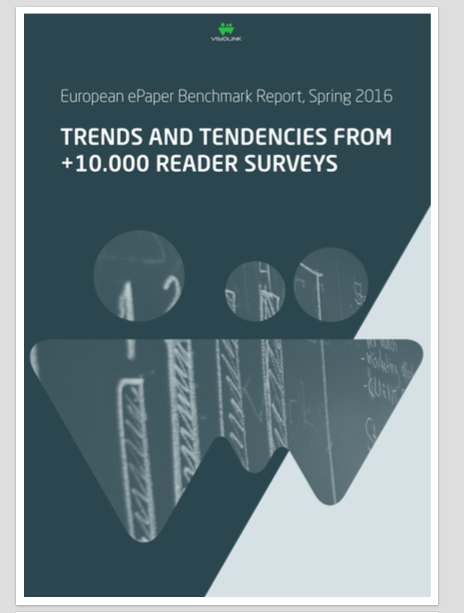
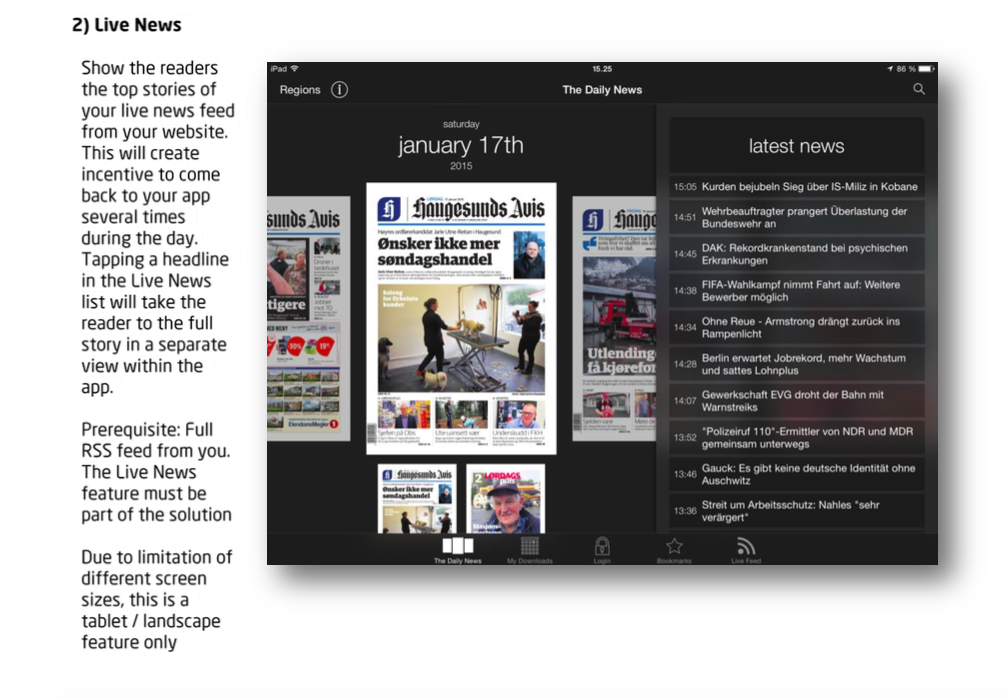
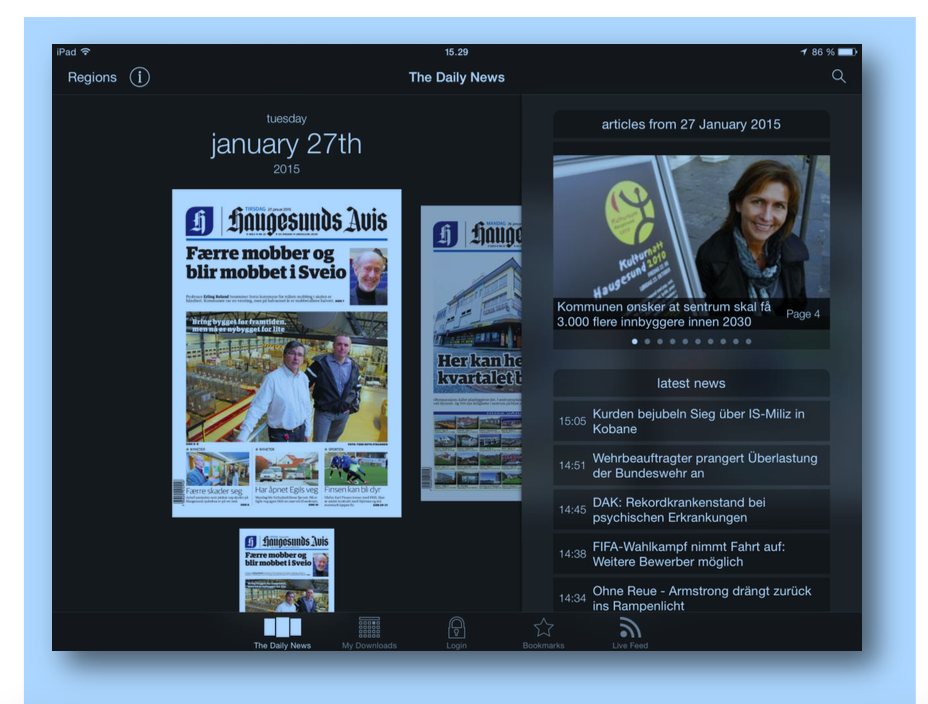
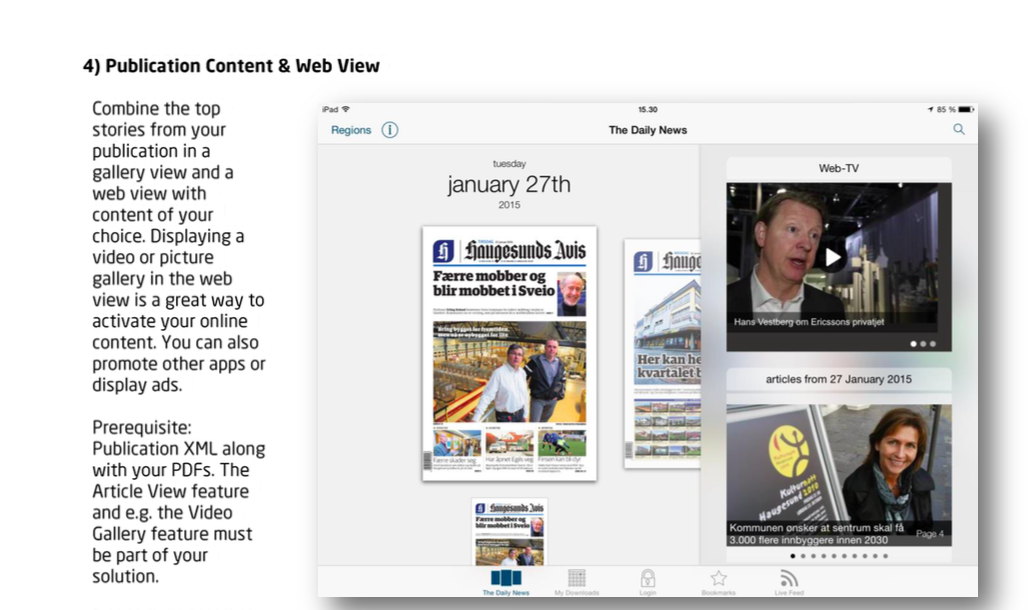
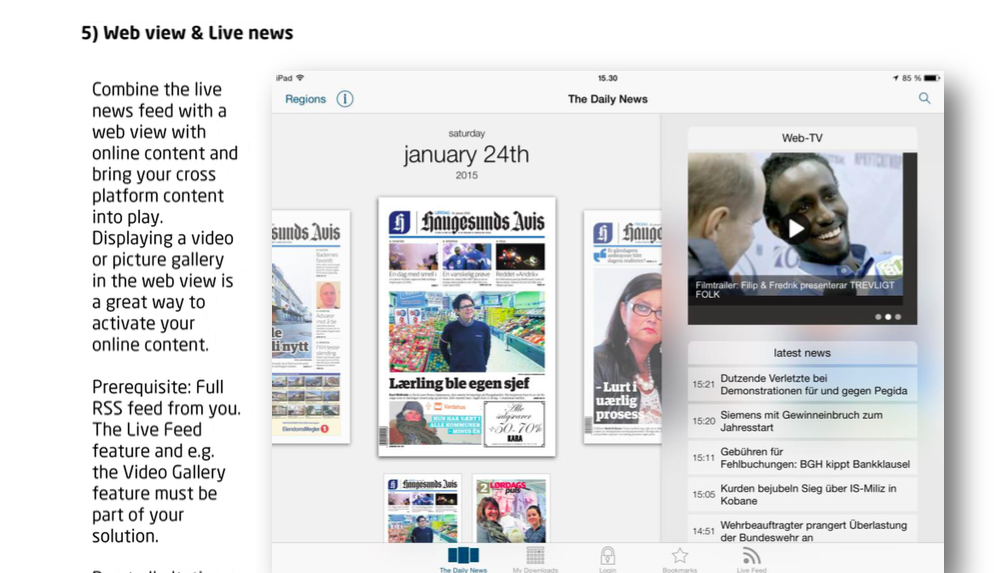
Here is how one newspaper enhances its e paper edition through a variety of additions that make the user experience better
The Spring 2016 THE EUROPEAN EPAPER BENCHMARK REPORT is out and with it the latest findings about e paper consumption among European readers.
Readers of TheMarioBlog know that e papers are of great interest to me, so I am always alerted when new data appears about the rate of consumption of e papers. I always mention that the Europeans, and, particularly the Scandinavians, treat their e paper editions with more sophistication and better user experience than publishers in the United States.
These are some of the takeaways of this recent report:
1. The average age of ePaper readers remains high
While there are significant differences in average age between the various newspaper’s ePaper readers, the overall average age of the European ePaper reader remains in the late 50s. To be exact, the average age in the Spring 2016 report is 58,3.
2. Tablet is still king – but smartphone is moving up
When we asked the ePaper readers about the platforms they use to read newspapers, tablet is still the European ePaper readers’ favorite. It is now used by 62,7% compared to 54,6% in the Autumn 2015 survey.
When you consider that the survey was conducted in ePaper interstitials, it is not surprising that tablet is preferred to print – 62,7% use tablet while 34,6% read the printed paper. Nevertheless, the survey still shows that the printed newspaper is less important to ePaper readers.
While both print and web-based papers’ importance is decreasing, smartphone’s popularity is growing. Only 13,7% read the paper on smartphone in the Autumn 2015 survey – now 20% say they read the newspaper on smartphone.
3. Readers are spending more time on the ePaper
The readers’ loyalty to the ePaper was proven in the previous benchmark report, and that loyalty is only solidified by the recent survey which shows that readers are spending an increasing amount of time reading the ePaper.

4. Subscribers want local news in both national and regional newspapers
Looking at the differences, regional newspaper readers are more interested in housing and sports than national newspaper readers, who prefer reading about culture, business and finance and new technology.
8. Readers chose the ePaper because of availability and…
The ePaper’s strength is by far its availability. 64,3% are motivated to read the ePaper because it is available everywhere.
We see a continuos growth in traffic on the e-papers, and we see that the e-papers are the number one channel to convert print subscribers to become subscribers on paid digital content.
Some questions about this report for VisioLink CEO Jens Funder Berg
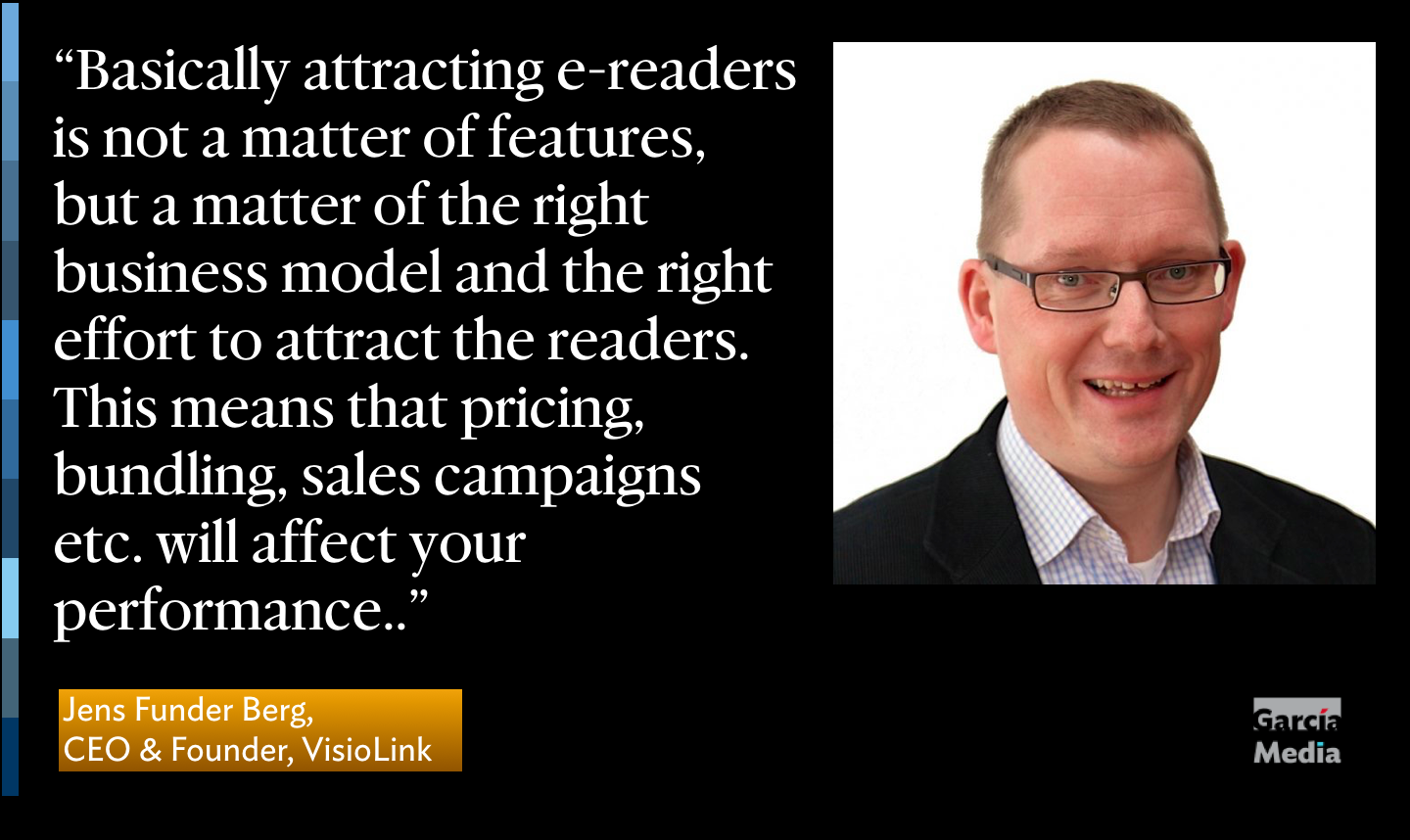
Mario: it seems that it is 45+ and older who cling to the epapers. Any idea why the younger set don't go there? I think I know why, but would like your take on this. They don't wish to flip through the pages of the epaper? It is not intuitive to them?
Jens:
When we look at e-paper reader participating in our surveys, they would be 100% recruited among users reading an e-paper on a PC, Tablet or Smartphone. By including an interstitial ad with the text “Help us to get better – please answer our survey” we get the high number of respondents.
As they are existing readers and as they most likely have a “Combi Subscription” they have paid to get BOTH the print paper and the e-paper, but they have – when they answer the survey – chosen to read the e-paper. As these readers are very similar to existing print readers, they also have the same age as print readers.
Still though – we see a group of younger readers as well.
Mario: We both have talked about some of the Scandinavian dailies that ADD content suitable for tablets to the e papers. I was not clear if your study differentiated between the cut and dry pdf of pages and those with videos, photo galleries, etc. Did I miss something?
We have seen a high demand for adding something extra, and it could include Online Radio, Crosswords, Weather, TV-guide (EPG), Archive, Magazines etc., but we don’t see a clear correlation between more content and more readers.
The best performing e-papers reach as high as almost 25% of the print circulation, so that you – if you have 100,000 in print circulation – would have 25,000 e-papers readers daily, but it’s not necessarily better to have more features. Basically attracting e-readers is not a matter of features, but a matter of the right business model and the right effort to attract the readers. This means that pricing, bundling, sales campaigns etc. will affect your performance.
E-paper solutions are often a “low involvement investment” for the publisher, but if they look at their direct ROI on the e-papers, they will see high earnings with very little effort, as all content is already there and the production process is 100% automated. In addition to this, the e-paper is easy to understand for the audience willing and able to pay for a newspaper subscription.
Mario: What is the impact on advertising?
There’s a debate in Norway right now on pricing on print advertising. Since circulations has gone down, the advertisers also think that ad prices should be lowered. But if you can keep a certain level of distributed newspapers – print AND/OR replica – then the advertiser reaches as many readers as before. The total sum of print and digital readers is your total audience, and therefor you can protect the prices.
When it comes to digital ad formats, you have clickable ads with up to 10% CTR from “clickable print ad to landing page” and we see the same for Interstitials – meaning full screen ads, that wasn’t in the printed paper. We see CTR as high as 11-12% on Interstitials, and when we use the Interstitial format for our own surveys to collect participants, we has seen as high as 22% CTR, when you can win an iPad or Apple Watch etc.
Get the complete report here
http://http://info.visiolink.com/download-benchmark-report-spring-2016
Related content
E papers continue to resonate with readers
https://garciamedia.com/blog/epapers_continue_to_resonate_with_readers